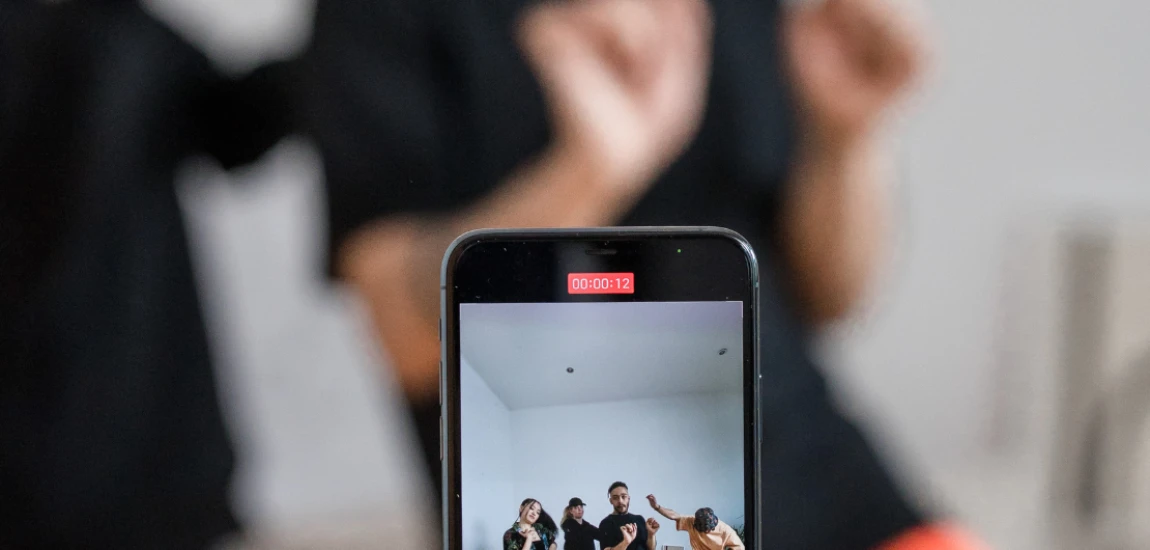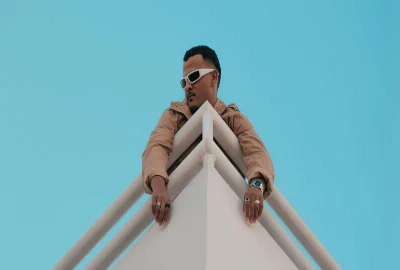TikTok Trends That Changed How We Consume Entertainment This Year

TikTok is no longer just an app for quick laughs, dance routines, or catchy lip-syncs—it has grown into one of the most influential platforms shaping entertainment worldwide. Its algorithm-driven ecosystem doesn’t just reflect culture; it creates it. With billions of users globally and trends that spread across borders instantly, TikTok now has the power to determine what songs chart, what movies succeed, and which creators become tomorrow’s mainstream stars.
In 2025, TikTok is more than a social platform—it’s a global stage. Unlike traditional media, where access was limited to big studios and networks, TikTok democratizes entertainment. Anyone with a smartphone can share a story, remix content, or launch a viral trend. This accessibility has redefined the meaning of influence, giving rise to “micro-stars” who rival established celebrities in reach and relevance.
But what makes TikTok unique is its combination of short-form creativity, interactivity, and participatory culture. A single viral challenge can spark millions of videos, a trending sound can fuel a music career, and a fan-made theory can influence how audiences interpret their favorite shows. Entertainment doesn’t just come from the top down anymore—it’s being built collectively by creators and fans.
This blog explores the TikTok trends that changed entertainment this year, looking at how micro-movies, viral music, fan participation, creator-to-mainstream pipelines, and the blending of short- and long-form content are reshaping how we watch, listen, and engage with media.
The Rise of Micro-Movies: Storytelling in 60 Seconds
One of the most fascinating TikTok trends this year has been the explosion of micro-movies—short narratives crafted in under a few minutes. Unlike the skits and comedy bits of earlier TikTok years, these are fully developed stories with plot twists, emotional arcs, and sometimes even special effects. Creators are proving that compelling storytelling doesn’t require a 90-minute runtime; it just requires ingenuity, editing skills, and the ability to connect emotionally in seconds.
The appeal of micro-movies lies in their accessibility. For creators, TikTok provides a free platform to experiment with filmmaking techniques—something previously limited by budget, equipment, or gatekeeping studios. For viewers, the experience is addictive: each scroll brings a fresh story, and many creators now serialize content, keeping audiences hooked across multiple parts. Some even end episodes on cliffhangers, driving eager fans to anticipate the next upload just as they would a Netflix series.
The ripple effect is massive. Independent filmmakers now use TikTok as a launchpad, debuting projects online before pitching to film festivals or streaming services. Studios are also adapting—many are producing vertical-format trailers specifically designed for TikTok consumption, realizing that audiences increasingly discover films on their phones first.
What’s particularly groundbreaking is the participatory element. Fans don’t just watch micro-movies—they remix them, duet with them, or even create alternate endings. This creates a dialogue between storyteller and audience, something traditional film rarely offers. TikTok has essentially blurred the line between audience and creator, making entertainment a collaborative experience.
Looking ahead, micro-movies may be the foundation of a new wave of filmmaking—fast-paced, interactive, and global by default. What started as 60-second stories is now reshaping how we define cinema in the digital era.

Viral Music Breakthroughs: From TikTok Sound to Billboard Hit
TikTok has revolutionized the music industry, becoming the ultimate driver of viral hits. This year alone, dozens of songs that started as TikTok “sounds” climbed onto global charts, sometimes within days. Unlike traditional radio or curated playlists, TikTok’s algorithm pushes music to listeners organically, based on what fits trends, dances, or emotional storytelling. That means any track—from unsigned artists to established stars—can go viral overnight.
What’s especially powerful is how TikTok has changed listening behavior. Instead of passively discovering songs through radio DJs, fans are now actively participating in promotion. They use snippets to soundtrack their videos, create challenges around specific lyrics, or remix songs into new versions. A hit track today isn’t just consumed—it’s performed, shared, and transformed by millions of users.
For artists, TikTok has become a launchpad. Many emerging musicians no longer dream of getting discovered in clubs or by talent scouts—they aim for virality. Record labels, too, have shifted strategies, often scouting artists directly from TikTok. Marketing campaigns are built around choreographed dance challenges, influencer partnerships, or sound memes designed to spread across the platform.
Interestingly, even established artists are writing music with TikTok in mind. Songs are now crafted to include a “hook moment”—a 10–20 second clip ideal for looping. This has altered not only promotion but also songwriting structures, showing TikTok’s influence runs deeper than trends.
The cultural impact is undeniable: TikTok is the new music discovery engine. It levels the playing field, where an indie artist can rise alongside megastars. And for fans, it creates a sense of ownership—they’re not just listening to hits; they’re helping to make them. This shift marks one of the most significant changes in how entertainment is consumed and created today.

Interactive Fandom: Fans as Co-Creators
Fandom has always been a vital part of entertainment, but TikTok has transformed it into something far more interactive and immediate. Gone are the days when fans only engaged in niche forums or fan conventions. Now, with TikTok’s tools like stitches, duets, and edits, fans actively contribute to the cultural conversation in real time.
For example, when a new series drops on streaming platforms, TikTok becomes an instant hub of analysis. Fans create breakdowns of hidden Easter eggs, post theories about character arcs, or recreate iconic moments with their own twist. A Marvel trailer or a Netflix premiere doesn’t just spark passive viewing—it launches an entire TikTok-driven ecosystem of reaction videos, memes, and discussions.
What makes this so transformative is the sense of participation. Fans feel empowered because they’re not simply consuming—they’re co-creating. Studios have started to lean into this trend by incorporating fan content into marketing strategies. Some now reshare TikToks directly from their official accounts, respond to fan theories, or design challenges that encourage user interaction.
The emotional payoff for audiences is huge. Instead of being distant observers, they feel like collaborators in their favorite franchises. This sense of community builds loyalty, which explains why shows with strong TikTok fandoms often enjoy longer lifespans and higher engagement.
But the influence extends beyond fandom communities. Entire trends, aesthetics, and cultural discussions have been sparked by fan-created TikTok content. From viral outfit recreations to fanfiction-inspired videos, the boundaries between official and unofficial entertainment are dissolving.
In short, TikTok has redefined fandom. It’s not a side conversation anymore—it’s an essential part of how entertainment is consumed, interpreted, and kept alive in popular culture.

The “TikTok-to-TV” Pipeline: New Stars and Stories
TikTok has also disrupted the entertainment industry by becoming a talent incubator. Creators who start out making short comedic skits, lifestyle clips, or storytelling vlogs often transition into mainstream entertainment. This year, several TikTok stars signed deals with television networks, landed roles in films, or launched their own brand partnerships.
The appeal for audiences is authenticity. Unlike polished Hollywood actors, TikTok creators often rise to fame by being relatable. Fans have already connected with their personalities, making the leap from smartphone screens to big screens more natural and impactful. When a TikTok star lands a TV role, viewers feel like they’re supporting “one of their own.”
But it’s not just about individuals—it’s about ideas. TikTok is now a breeding ground for new story formats and concepts. Viral challenges have been adapted into reality TV show pitches, while fictional mini-universes created on TikTok have inspired podcasts, web series, and even book deals. What once existed as 30-second videos can now evolve into full-scale multimedia franchises.
Studios have caught on quickly. Talent scouts increasingly browse TikTok to find the next breakout personality or idea. The platform has effectively replaced traditional auditions for some projects, especially in comedy and lifestyle genres.
This “TikTok-to-TV pipeline” isn’t just a trend—it’s a sign of a shifting power structure in entertainment. Instead of Hollywood gatekeepers deciding who gets exposure, TikTok’s algorithm and audiences decide who rises. That means mainstream entertainment is becoming more reflective of grassroots culture, diversity, and everyday voices than ever before.

Short-Form Meets Long-Form: Blurring Entertainment Boundaries
Another major TikTok trend this year is the blending of short-form and long-form content. While some predicted short videos would erode attention spans, what we’re actually seeing is a complementary relationship. TikTok introduces audiences to creators, stories, or genres in bite-sized clips, which then funnel people into longer formats like YouTube series, Netflix shows, or podcasts.
For example, stand-up comedians often post short clips of their sets on TikTok, which then drive ticket sales for their full-length specials. Documentaries use TikTok teasers to spark curiosity, leading viewers to streaming platforms for the complete story. Even book publishers are using “BookTok” previews to generate hype around full-length novels.
At the same time, mainstream entertainment is borrowing TikTok’s aesthetic. Fast edits, jump cuts, interactive elements, and vertical-format filming are increasingly integrated into TV shows and advertising. Even traditional news outlets now package information in TikTok-style snippets to remain relevant.
This convergence has reshaped how audiences consume entertainment. People aren’t choosing between long-form and short-form—they’re embracing both. A user might binge TikTok videos during a commute, then settle into a two-hour film at night. The key difference is that TikTok often acts as the gateway: it sparks interest, builds momentum, and keeps content alive in daily conversation.
Ultimately, TikTok has created a layered ecosystem of consumption. It’s not replacing other forms of entertainment—it’s weaving them together into a more interactive, on-demand experience.




